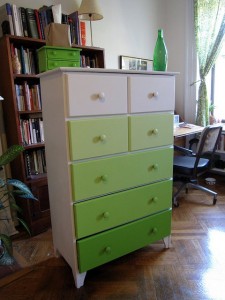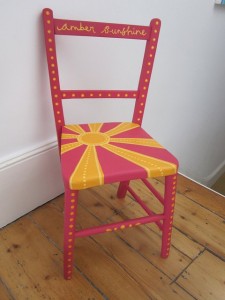
Furniture is a basic component of any home décor. A lot of thought is often put in choosing the right pieces of furniture to use when a home is being freshly furnished. However over time, age and neglect can erode the original beauty leaving the furniture looking bland and uninspiring. Replacing these pieces with new ones would obviously solve the problem but there are times when budget constraints preclude repalcement as an option.
A more imaginative, hands-on and personal solution would be to restore these pieces by applying dacorative paint.
Decorative furniture painting is generally used to:
- Restore old pieces
- Mimick other materials and textures
- Give furniture antique looks
- Preserve hand-me-downs
There are various techniques used to apply decorative paint on furniture. The choice of technique is dependent on the desired outcome. Let us look at a few popular techniques.
1. Colour washing is used to add colour to decorative furniture, leaving them with a much warmer finish than the ordinary flat, solid colour coat of paint. Applying this technique begins with the application of a base coat of paint. Over this coat, a glaze two shades darker is applied. Then using a criss cross stroke, the glaze is brushed.
Alternatively, a rag can be used to rub on the glaze in a circular motion. The result is a softer looking texture that beautifully masks flaws on the furniture finish.

Stencil Painted Table
2. Marbleizing: this technique is used to mimic the regal look and feel of marble. Marbleizing is accomplished by sponge painting a base of two or three similar colours onto a surface to give it a mottled stone-like look. A thin brush or feather is then used to add white or black streaks to complete the marble look. A coat of clear acrylic sealer is finally used to form a protective layer over the paint job and to make the piece shine like real polished marble. Marbleized furniture blend well with most decorative schemes because of their natural appearance.
3. Distressing: Sometimes, the objective of decorative furniture painting is to create rustic, shabby, aged look. To achieve this, a destressing (aging) technique is employed. One method used is rubbing some areas and corners of a piece with white wax before painting it. The waxed areas don’t take the paint rusulting in a finish that appears worn out at the edges. Sand papering a surface slightly can also distress a piece further. Distressing furniture adds a lot of character to your decor and is ideal for creating a shabby –chic aura.

4. Wood grain: wood coloured paint and glaze can be used to make non wood furniture, look like wood. This is achieved by applying the glaze over a base paint coat, and then dragging a graining comb (a tool made to replicate the wood grain) over the wet glaze. This impressive wood mimicing technique works well on metal and laminate and is often used on non wood kitchen cabinets.
5. Leafing: This is the use of a thin patina of gold, silver or copper to embellish furniture. Leafing can be employed as a few highlights, or an entire cover on a piece to make it appear as though it’s made of solid metal. A patina paint treatment can also be used on top of the leafing to give it an aged, rusted look.
Good old furniture can get a new lease of life and add a punch of colour and verve to your home if creatively and decoratively restored. Don’t let that hand-me-down chest waste away, paint it.

Blue bed side table
Posted by Pambo Maridadi @ Crown Paints Kenya Ltd Email: info@crownpaints.co.ke






